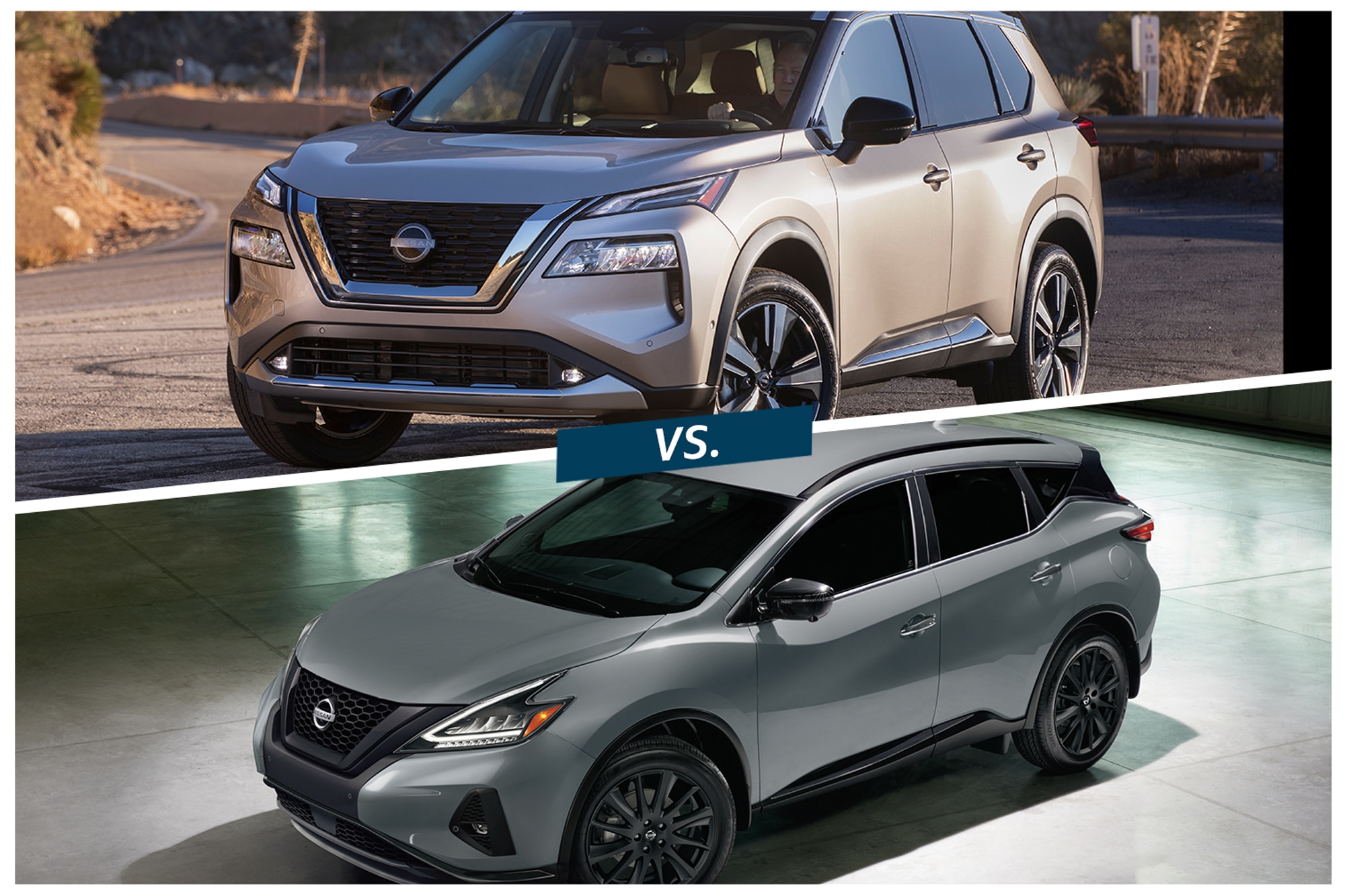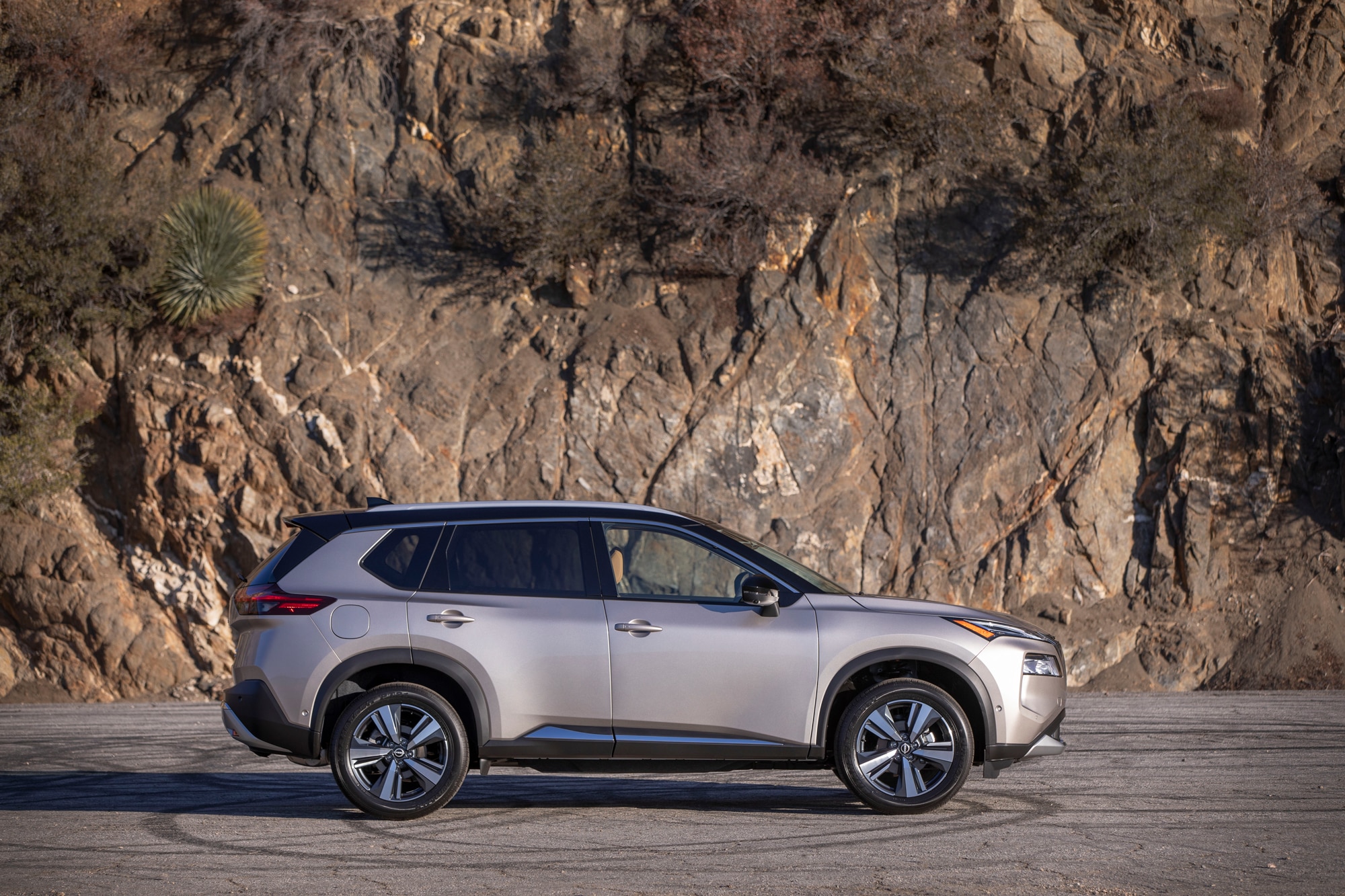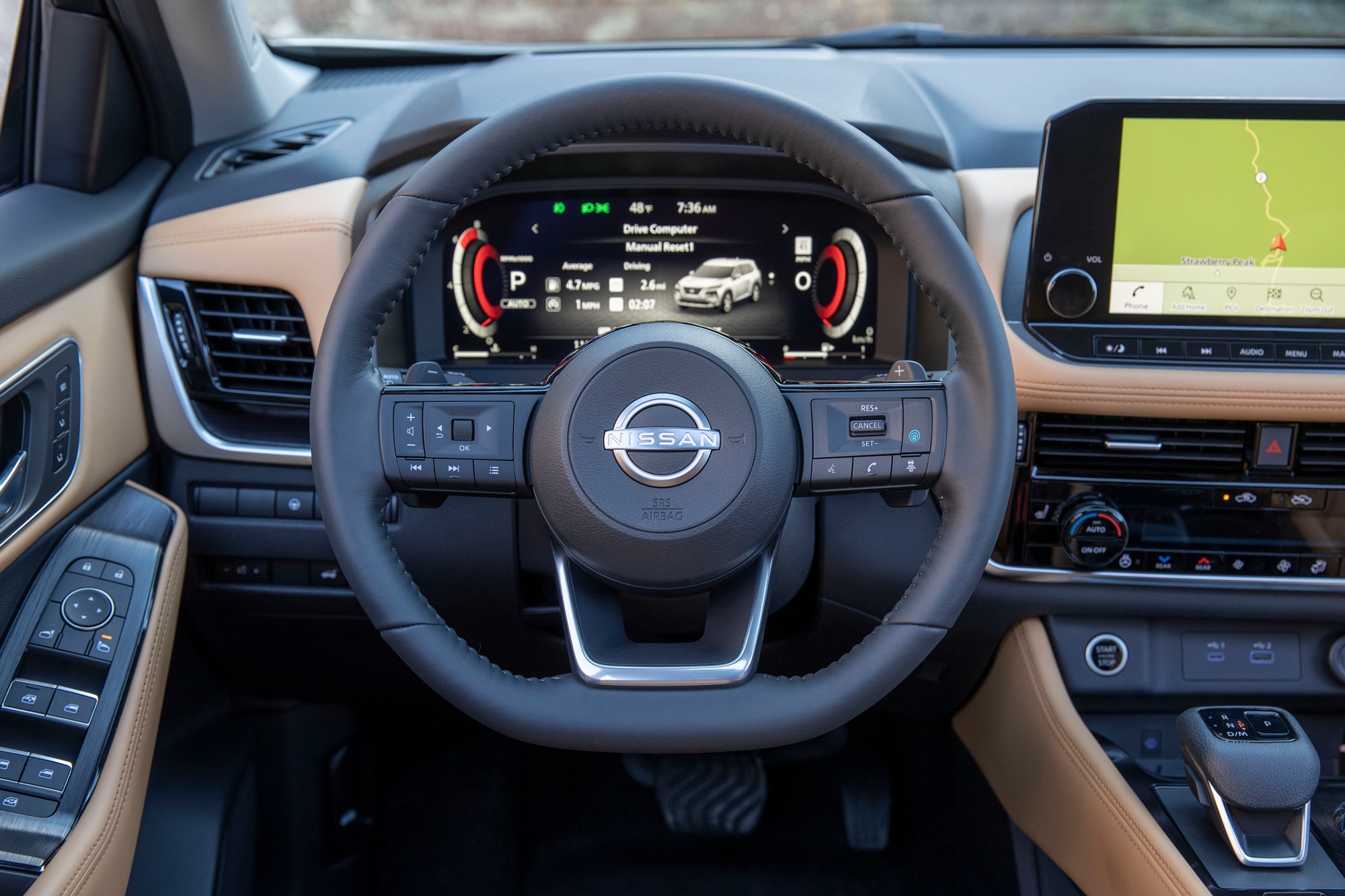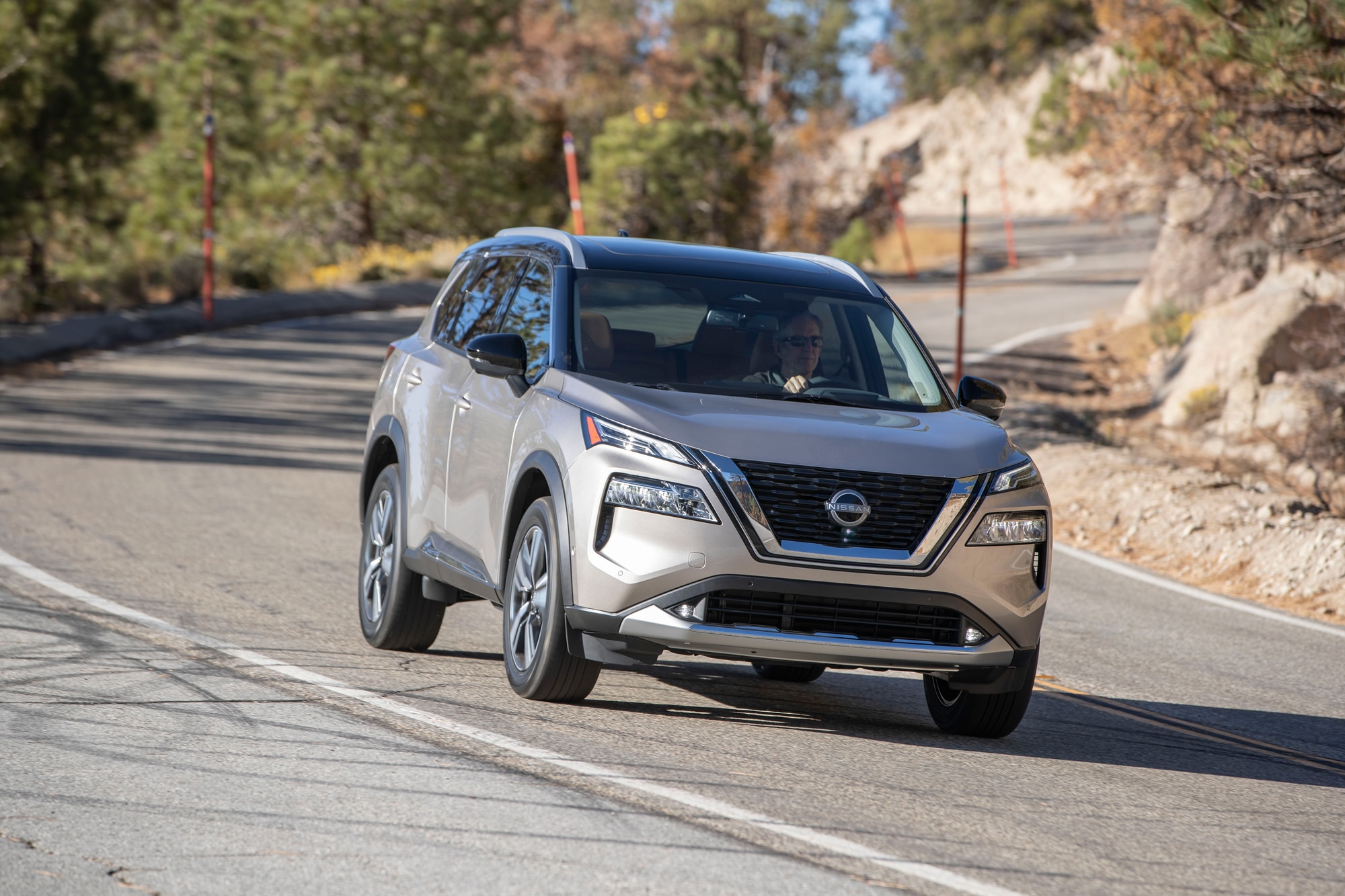Compared: 2022 Nissan Rogue vs. 2022 Nissan Murano
Because one was recently redesigned and the other is nearing the end of its lifecycle, these family-friendly SUVs are more similar than you might expect.
 Nissan Rogue/Murano
Nissan Rogue/Murano
Article QuickTakes:
While these two Nissan SUVs offer similar headroom, legroom, and available technology, there are big differences in the price and fuel economy of these models. Here’s how they compare.
 Nissan Rogue
Nissan Rogue
Nissan Rogue vs. Nissan Murano: Price
The Rogue starts at $28,075 for the front-wheel drive S trim. At the top of the scale is the Platinum trim, which starts at $39,355. All models use a 201-hp turbocharged three-cylinder and all-wheel drive is optional across the board for an extra $1,500.
The Murano starts at $34,435 for the front-wheel-drive S trim. Every Murano is powered by a 260-hp V6 engine, and all-wheel drive is available for every trim for $1,700. The top-of-the-line, all-wheel-drive Platinum trim starts at $47,685.
 Nissan Rogue
Nissan Rogue
Nissan Rogue vs. Nissan Murano: Interior
While the Rogue is nearly 10 inches shorter than the Murano, better packaging means passenger space is nearly equal between the two and there’s more cargo volume in the compact SUV. The Rogue offers 105 cubic feet of space in the passenger compartment, with 32 cubic feet of storage space behind the second row of seats in the S and SV trims. The SL and Premium expand that to 37 cubic feet with the “Divide-N-Hide” cargo tray set in its low position. The larger Murano has 108 cubic feet of overall passenger space (103 on models with the dual-pane moonroof) and 32 (or 31 with the moonroof) cubic feet for luggage behind the second row of seats.
The base S trims of both the Rogue and the Murano come with Apple CarPlay and Android Auto connectivity on an 8-inch color display. The base Rogue comes with a four-speaker sound system, while the base Murano offers six. Bose premium audio upgrade options are available for both models.
The Rogue, with its more recent redesign, offers a few technology features that are missing from the Murano, like a $400 head-up display for the windshield and a $125 tablet holder for back-seat entertainment. Both SUVs offer Drive Recorder ($360), a dealer-installed dash-cam that not only films what happens as you drive, but can also record break-ins for sharing with insurance companies or law enforcement, and the $450 Virtual Key feature that turns your smartphone into a key for the vehicle.
Nissan made a full suite of advanced driver-assistance and safety tech standard equipment across the Murano lineup, including blind-spot warning, rear cross-traffic alert, and lane-departure warning. These features are also offered on the Rogue, although some of the more advanced measures, like lane-keeping assistance and traffic-sign recognition, are not available on the base model and are optional on higher trims. One quirk of the Murano’s age: Nissan’s ProPilot Assist, which combines adaptive cruise control and lane-centering technology, is not available even though it comes standard on all but the entry-model Rogue.
 Nissan Rogue
Nissan Rogue
Nissan Rogue vs Nissan Murano: Fuel Economy
According to the EPA, both the front- and all-wheel drive versions of the Murano achieve 20 city mpg and 28 highway.
The Rogue, which has half as many cylinders, is significantly thriftier. The three-cylinder engine is most efficient—30 mpg in the city and 37 on the highway—in the front-wheel-drive base model. Adding all-wheel-drive or upgrading to the SL or Platinum drags those figures down by 1 to 3 mpg.



